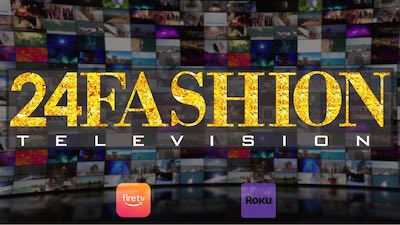Introduction
Influencer marketing has evolved from a trendy buzzword into a core strategy for businesses of all sizes. Today, it’s not just about paying social media stars to promote products – it’s about influencing marketing itself by integrating influencers with public relations (PR) and media outreach.
The results speak for themselves: the global influencer marketing industry is projected to exceed $32 billion by 2025, and according to a recent Influencer Marketing Benchmark Report, over 80% of marketers affirm influencer marketing as a highly effective strategy influencermarketinghub.com. In other words, done right, influencer collaborations can deliver returns that outshine many traditional tactics.
For general business owners, the key is understanding how to harness influencer marketing’s power and amplify it through strategic PR and media coverage. This informative guide will explore the latest trends in the United States, explain how combining influencers with PR boosts credibility and ROI, and show why partnering with a firm like VUGA Media Group can convert these trends into tangible business growth.
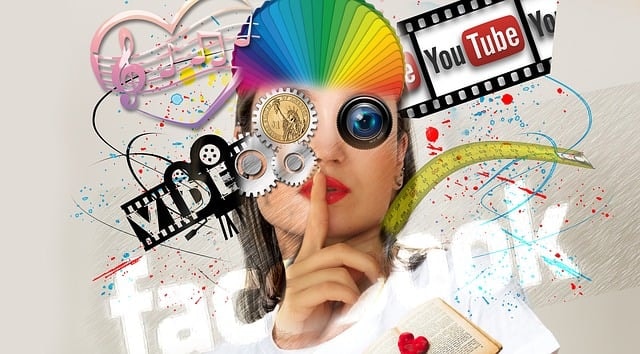
Understanding Influencer Marketing
Influencer marketing involves partnering with individuals who have a dedicated online following (social media influencers) to promote your brand or message.
Unlike traditional ads that consumers often tune out, influencers provide trusted voices that connect brands with target audiences on platforms like Instagram, YouTube, and TikTok. Over the past few years, this industry has seen explosive growth.
As the chart above shows, global influencer marketing spend jumped from just $1.7 billion in 2016 to about $24 billion in 2024 – more than a 1,300% increase whop.com. This boom is driven by the proven success of influencer campaigns in driving engagement and sales.
In fact, many influencers serve as powerful brand ambassadors who can humanize a business and build meaningful relationships with consumers.

Market Trends: In the USA, influencer marketing trends continue to evolve rapidly. Brands are increasingly favoring micro and nano influencers (those with smaller but highly engaged niche communities) alongside mega and macro influencers. While mega-influencers (think celebrities with millions of followers) offer massive reach, micro and nano influencers often deliver higher engagement and authenticity.
These smaller-scale influencers have higher engagement and deep trust within their niche communities. Another rising trend is the use of virtual influencers – computer-generated “personalities” that brands use in campaigns – showing how businesses are even experimenting with AI-driven spokespeople.
Instagram influencers remain extremely popular, but TikTok’s rapid growth has made it a hotspot for reaching Gen Z and younger Millennials. The common thread in all these trends is that influencer marketing works – and companies are investing accordingly.
By understanding these dynamics, business owners can craft influencer marketing strategies that align with industry growth. In short, influencer marketing has proven itself as a powerful marketing tactic – not just a passing trend.

The Role of PR & Media Coverage in Influencer Marketing
While influencer campaigns on social media are powerful on their own, pairing them with strategic PR and media coverage can unlock an even greater return on investment.
Earned media – that is, publicity gained through press coverage, interviews, or news articles – amplifies your brand’s message beyond the influencers’ immediate followers. Think of it this way: an influencer might introduce your product to thousands of Instagram users through a post, but a story in a respected publication can give your brand exposure to millions plus an added layer of credibility.
Media coverage and influencer marketing have a symbiotic relationship. Influencer partnerships often produce newsworthy content (such as unique campaigns or events) that can attract press coverage. Conversely, appearing in the media boosts an influencer campaign’s credibility – when potential customers see your business featured on a major news site, it validates the influencer’s endorsement.
In essence, PR activities increase brand awareness and trust, reinforcing the impact of social posts. For example, a startup might run an influencer marketing campaign to promote a new product on social media, and simultaneously secure an interview or feature story in an industry publication. The press coverage serves as third-party validation, lending authority to the influencer’s message.
Another way PR drives ROI is through SEO benefits. Articles on high-authority news sites often include backlinks to your website. These SEO-optimized media mentions can improve your search rankings, leading to sustained website traffic and leads long after the initial campaign.
Unlike a fleeting social media post, a press article or online news story is indexed by Google and can continue to influence purchasing decisions for months or years. Moreover, PR coverage frequently gets shared on social media platforms as well, creating a multiplier effect across multiple platforms.
Ultimately, strategic media coverage boosts brand credibility and brand value. Consumers tend to trust editorial content and word-of-mouth more than ads. By leveraging PR along with influencers, you tap into both forms of trust: peer-like recommendations from influencers and authoritative validation from press.
This one-two punch can significantly increase awareness and trust – leading to more clicks, inquiries, and boosting sales – thereby maximizing the ROI of your marketing spend.
Data-Driven Influencer Marketing

In today’s marketing landscape, gut feeling isn’t enough – data is key to driving results. Successful influencer marketing relies on analyzing the right metrics and staying on top of trends.
Google search data shows just how mainstream this strategy has become: interest in “influencer marketing” has risen dramatically in the past five years, reflecting how many businesses are now leveraging this tactic. But beyond search popularity, you need to look at campaign analytics to ensure your influencer investments pay off.
Key Metrics to Measure Success:
Engagement Rates: Monitor likes, comments, shares, and saves on influencer posts. Higher engagement (relative to follower count) indicates the content resonated. An influencer’s engagement rate is often a better indicator of impact than sheer follower count.
Follower Growth and Reach: Track any follower growth on your brand’s accounts and the overall reach (impressions) of the campaign content. Influencer campaigns can expose your brand to new audiences, growing your own social media following and brand visibility.
Website Traffic and Conversions: Use tracked links or unique discount codes to see how many people clicked through to your site and what they did next. Did the influencer campaign drive significant website traffic? Did it result in sales or sign-ups? These metrics tie the campaign directly to revenue generated.
Sentiment and Meaningful Interactions: It’s not just about numbers; quality matters. Pay attention to the sentiment of comments or feedback. Are people excited about your product or tagging friends with genuine interest? Meaningful interactions – like personal testimonials or detailed questions – are signs of strong audience connection sparked by the campaign.
Data-driven influencer marketing means using these metrics to refine your approach continually. For example, you might discover that one influencer’s audience had an especially high conversion rate, indicating a great fit with your target market, whereas another with more followers delivered fewer results. Such insights help you reallocate your marketing budgets more effectively going forward.
Crucially, don’t overlook ROI relative to other channels. Studies show that influencer marketing often outperforms traditional advertising in ROI. In fact, 60% of marketers agree that influencer marketing has a higher ROI than traditional ads uschamber.com.
This doesn’t mean you should abandon other marketing methods, but it underscores the importance of investing in influencer strategies and tracking results. By analyzing data – from Google Trends down to campaign KPIs – you can demonstrate how influencer and PR efforts contribute to revenue and adjust your strategy to maximize that return.
Crafting an Effective Influencer Marketing Strategy
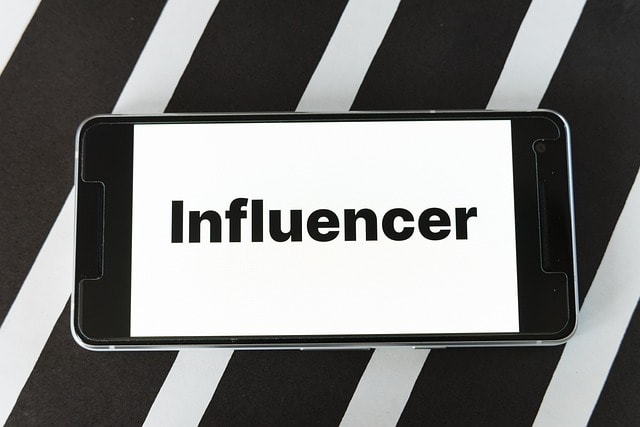
Running an effective influencer marketing campaign is not a random hit-or-miss endeavor; it requires careful planning. Here are key steps and considerations for business owners to craft a strategy that drives maximum ROI:
Set Clear Goals and Identify Your Audience: Start by defining what you want to achieve (e.g. increase brand awareness, drive product sales, boost app downloads) and pinpointing the target audience you want to reach.
Clarifying your goals and target audience will shape all other decisions – it ensures you focus on influencers whose followers match your ideal customer profile and that your campaign content resonates with that target market.
Select the Right Influencers: Not all influencers are created equal. Look for creators who share your brand’s values and speak to your niche. Consider different influencer types:
Nano/Micro Influencers (1K–50K followers): These smaller-scale influencers often have higher engagement and deep trust within their niche communities. They are ideal for niche markets and can provide very authentic promotion.
Macro/Mega Influencers (100K+ followers): Larger influencers (including celebrities or industry leaders) offer broad reach and instant brand awareness, though typically with a lower engagement percentage. They’re useful for big-splash campaigns to reach a wide audience quickly.
Authenticity Check: Once you shortlist influencers, vet their metrics. Check the influencer’s engagement rate (do they get meaningful likes and comments relative to their follower count?), and watch out for any fake followers. Ensure their content quality and tone align with your brand image. Influencers typically have media kits or analytics available, so use those to verify their audience quality. The influencer’s followers should look like real people in your target audience. This due diligence ensures you partner with suitable influencers who can truly move the needle.
Craft a Win-Win Collaboration: When doing influencer outreach, approach with a clear value proposition. Influencers are more likely to partner with you if the collaboration is mutually beneficial. Offer fair compensation (whether payment, free product, or other perks) and creative freedom where possible. Personalize your pitch – explain why you chose them, referencing their style or niche expertise and how it aligns with your campaign. This shows respect for their work and helps start the partnership on the right foot. The best brand partnerships with influencers are built on mutual trust and aligned goals.
Define Campaign Parameters and Budget: Outline the campaign scope and make sure it fits your budget. Decide on the type of collaboration (a one-time sponsored post, a series of posts, a product review, a giveaway, etc.) and which social media platforms or networks will be used. Set clear deliverables (e.g. number of posts, video length, key messages or hashtags to include) and a timeline. This not only helps you budget properly (covering influencer fees and any production costs) but also ensures both you and the influencer know what to expect. The good news is influencer marketing can scale – you might start small and expand once you see results.
Integrate PR Opportunities: Plan ways to generate buzz beyond the influencer’s posts. This might include issuing a press release or pitching a story to media outlets about your campaign. For example, if your influencer campaign ties into a social cause or a trend in your industry, highlight that angle to journalists. By doing so, your marketing campaign reaches the influencer’s followers and gains exposure through news sites or blogs, multiplying its impact. Essentially, think of PR as an extension of the campaign that yields extra coverage and credibility.
Monitor and Adjust: Launching the campaign is just the beginning. Keep a close eye on the influencer’s content and how the audience responds. Ensure compliance with any guidelines (like FTC disclosure #ad). If a post underperforms or feedback suggests adjustments, work with the influencer to refine the approach. Maintain open communication – treat the influencer as a partner whose insights can help fine-tune the campaign in real time. Small tweaks (like changing posting times or emphasizing a different product feature) can improve campaign performance mid-stream.
Measure Results and Learn: After the campaign, gather all the data and gauge success against your initial goals. Calculate ROI by comparing the campaign results (sales, leads, web traffic, social lift) to what you spent. Don’t forget to factor in earned media from any PR efforts or organic buzz (including user-generated content (UGC)) – those are valuable outcomes, too. Identify what worked best (was it a particular influencer, platform, or content style?) and what could be improved. These learnings will inform your next influencer marketing strategy, creating a cycle of continuous improvement.
By following these steps, business owners can create a structured, data-driven influencer marketing plan. The process involves the art of finding the right influencers and telling a compelling story, combined with the science of targeting the correct audience and measuring results.
When done thoughtfully, influencer campaigns become highly effective investments that drive both immediate results and long-term brand growth.
Leveraging Media Networks for Authority
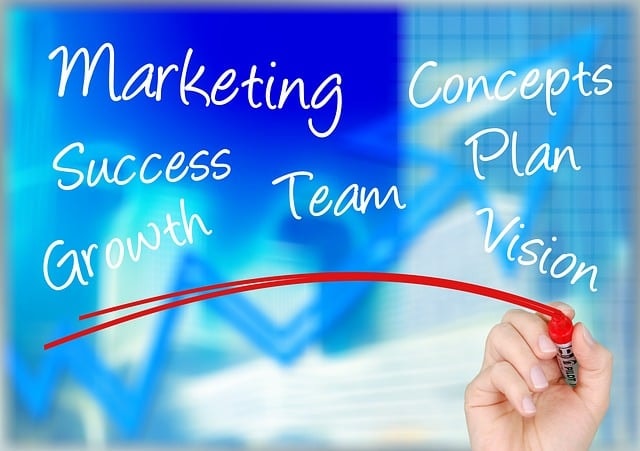
One of the unique advantages of working with a firm like VUGA Media Group is access to an established media network. While many brands struggle to get their story told in top-tier outlets, VUGA has media partnerships and distribution channels that can secure placements in influential publications. Leveraging such networks for press coverage can dramatically boost your brand’s authority in the marketplace.
Why is this important? Consider the concept of “authority by association.” When your company is featured alongside industry leaders in a well-known magazine or quoted in a news article, consumers subconsciously attribute more credibility and brand value to your business. Press coverage essentially acts as a third-party endorsement.
Even a brief mention in a high-profile outlet can lend weight to your marketing message that no amount of paid advertising can replicate. This is why brand and media partnerships, along with strategic PR, are so invaluable.
For example, imagine you run a boutique fitness apparel brand. You partner with a fitness influencer on Instagram who posts about your new clothing line. Now, through media outreach, you also land a story in a popular health and fitness publication or a spot on a morning TV show.
The influencer’s content builds buzz and peer-level trust, while the media coverage presents your brand as newsworthy and established. Potential customers exposed to both are far more likely to trust and remember your company. In essence, media coverage helps connect your brand to a wider audience and solidifies the impression that your company is a key player in its field.
Another benefit of broad media exposure is attracting larger influencers and partners in the future. High-profile influencers and celebrities often pay attention to media features. If they see your brand highlighted in Forbes or Entrepreneur, they may be more inclined to work with you, since it signals that you’re an up-and-coming or reputable name.
Media coverage can thus have a snowball effect: not only does it impress customers, but it can also draw the attention of other influencers, investors, or collaborators who can further your business growth.
To leverage media networks effectively, ensure that your PR messaging aligns with your influencer campaigns. Consistency in what influencers are saying and what your press releases or interviews convey will reinforce each other. Use press opportunities to highlight the unique angles of your campaign.
If your influencer collaboration involves a charity initiative or ties into an emerging trend, pitch that story to relevant outlets. VUGA Media Group’s PR experts specialize in identifying compelling story angles and pitching them to a vast network of journalists and media contacts – from mainstream newspapers to niche industry blogs.
In summary, press coverage and influencer marketing together can establish both social proof (people see others endorsing and using your product) and authority proof (trusted media voices validating your brand). The outcome is a powerful synergy that anchors your brand’s reputation firmly in the market.
Maximizing ROI with SEO & Long-Term PR Benefits
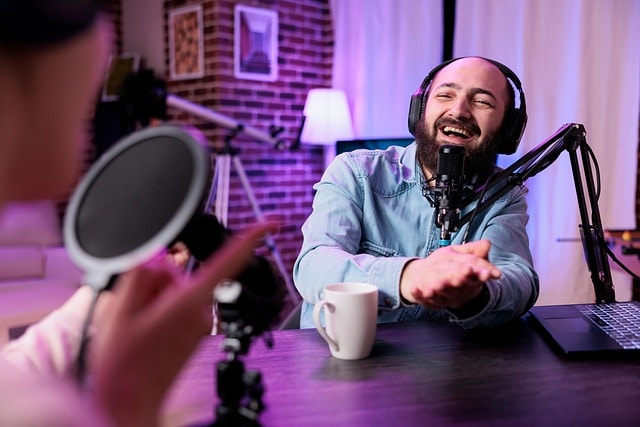
A well-planned influencer+PR campaign doesn’t just create short-term buzz; it also builds long-term assets for your brand’s digital presence. One often underutilized aspect of PR is its impact on search engine optimization (SEO). When your brand gets mentioned in online articles – especially on high-authority sites – it often comes with backlinks to your website.
These backlinks are like upvotes in Google’s eyes, signaling that your site is credible. Over time, this can boost your search rankings, leading to steady organic traffic. In this way, the ROI of a well-publicized influencer campaign continues accruing long after the initial posts and press hits.
Strategic PR placements also provide content that your marketing team can repurpose. For instance, you can highlight quotes from media coverage on your website (“As seen in Forbes…”) or share press snippets on your social channels for added credibility.
This kind of content builds trust with potential customers who are researching your business. It’s not uncommon for someone to Google a company after seeing an influencer’s post – when they do, finding authoritative articles about your brand can clinch their decision to buy. Essentially, PR coverage supports every stage of the customer journey, from awareness to consideration to purchase, thereby amplifying conversions in a holistic way.

Moreover, combining SEO-minded thinking with influencer marketing helps you identify content opportunities. For example, your team can create blog posts or guest articles that tie into the themes of your influencer campaign, using keywords that your audience is searching for.
By doing so, you attract additional visitors through search engines and establish your brand as a thought leader on those topics. Over time, building a repository of such optimized content and backlinks can dramatically amplify your inbound marketing results, turning your PR efforts into ongoing lead generation tools.
From an ROI perspective, it’s about squeezing maximum returns from every piece of content and coverage. An influencer’s Instagram video might directly drive sales for a week, and a press release might give a spike in referral traffic for a few days.
But the SEO value of that press mention, the credibility it adds, and the content that remains online keep working in the background. By viewing influencer marketing not as a one-off campaign but as part of an integrated strategy (that includes PR, SEO, and content marketing), business owners can achieve a far higher cumulative ROI. Each element – social buzz, media coverage, search visibility – feeds into the next.
Finally, tracking and attribution are vital to truly understand the long-term ROI. Make sure to monitor how users who come to your site via press backlinks behave: Do they subscribe, make a purchase, or return later? Use that data to quantify the impact of PR and SEO over time, not just immediate sales.
Many marketers are pleasantly surprised to find that a mention in a high-authority outlet can keep driving conversions for months. This is the enduring power of strategic PR married with influencer marketing – it plants seeds that keep yielding results well into the future.
Conclusion & Call to Action

In conclusion, influencer marketing – when executed with a strategic blend of PR and media coverage – can be a game-changer for business owners seeking real, measurable ROI. The landscape of social media and online influence in the USA is booming, and those who stay ahead of the curve are reaping the benefits.
We’ve discussed how understanding the latest trends (from micro-influencers to virtual avatars), using data to drive decisions, and amplifying campaigns through press coverage all contribute to superior outcomes. The formula is clear: authentic influencer campaigns + authoritative media coverage = a powerful ROI multiplier.
Many agencies focus only on one aspect – some excel at influencer campaigns while others specialize in PR – but few integrate both. VUGA Media Group bridges that gap.
By offering both influencer campaign management and guaranteed press coverage via its vast media network, VUGA provides a one-stop solution that ensures every marketing dollar works harder. For clients, this means campaigns that spark engagement on social media and land your brand in front of millions through top media outlets. The result? Enhanced credibility, broader reach, and ultimately higher conversion rates. You get all these benefits with one trusted team handling everything end-to-end, from finding the right influencers to securing prime media placements.
If you’re ready to unlock the true ROI of influencer marketing through strategic PR and media coverage, it’s time to take action. Don’t let your marketing efforts plateau with ordinary approaches – get the experts on your side.
Contact VUGA Media Group today to discover how their expertise can turn your marketing investment into measurable growth. With the right partner and strategy in place, you can transform influencer marketing from a trendy experiment into a reliable engine of sales, brand loyalty, and long-term success for your business.



